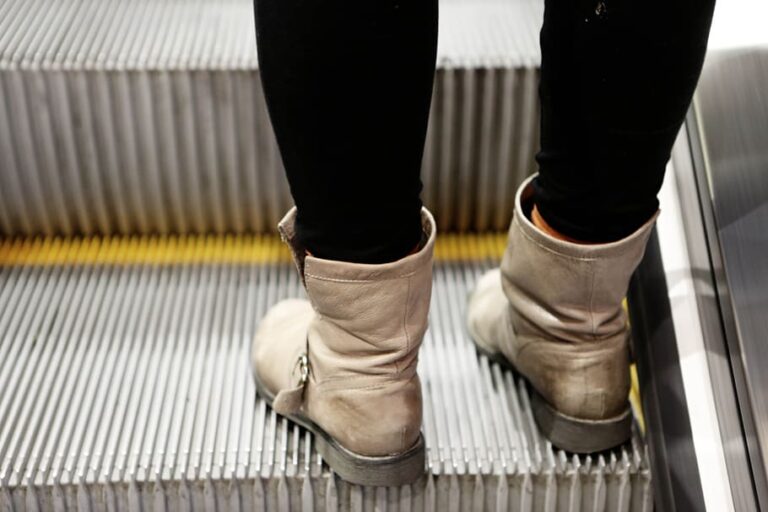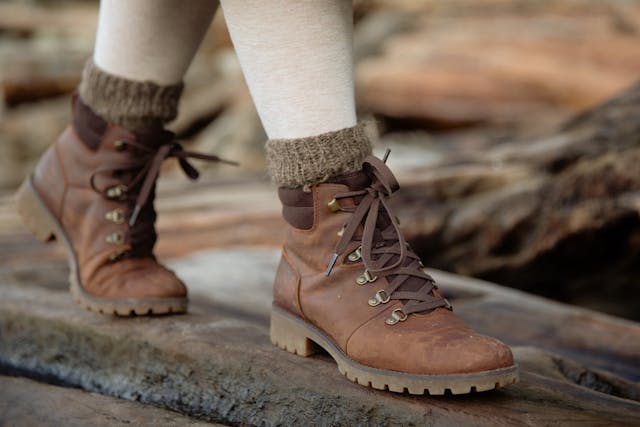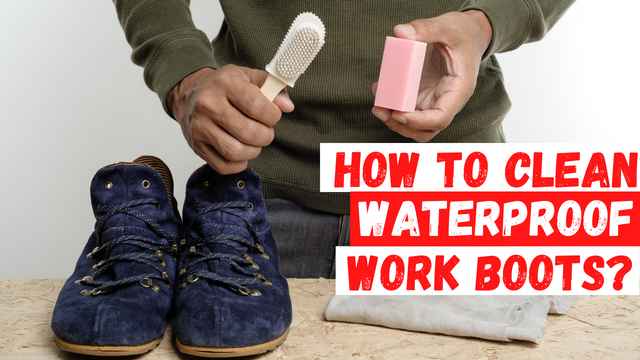How to Stop Steel Toe Work Boots from Hurting – 5 Easy Tips
As an expert in work boots, we understand that comfortable and safe footwear is paramount for anyone working in demanding environments. One of the most common challenges workers face is the discomfort caused by steel-toe work boots.
These boots are essential for safety but can be a source of significant discomfort if not properly managed. This comprehensive guide will share practical and expert tips to help you alleviate the pain associated with steel-toe work boots, ensuring a more pleasant and productive work experience.
How to Stop Steel Toe Work Boots from Hurting
1. Proper Fit is Key to Stop Boots Hurting
The foundation of comfortable steel-toe work boots lies in getting the perfect fit. A too-small boot can squeeze your feet, while one too-large can cause your feet to slide around, leading to blisters and other foot problems. Here’s how you can ensure you get the right fit:
- Measure Your Feet: Your feet swell throughout the day, so measure them at the end of the day when they are at their largest. This will give you a more accurate size.
- Wear Work Socks: When measuring your feet, wear the socks you typically use with your work boots. This accounts for the extra space the socks take up.
- Measure Both Feet: It’s common for one foot to be slightly larger than the other. Measure both feet and use the larger measurement when choosing your boot size.
- Use a Size Chart: Refer to the manufacturer’s size chart for the brand you are purchasing. Sizes can vary between brands, so this step is crucial.
2. Break in Your Boots
Even with the correct size, steel-toe work boots can be stiff and uncomfortable initially. Breaking them in gradually can make a significant difference:
- Wear Them at Home: Start by wearing your new boots around the house for short periods. This helps the boots start to conform to the shape of your feet.
- Use Thick Socks: Wearing thicker socks during the break-in period can help stretch the boots slightly, making them more comfortable.
- Flex and Bend: Manually flex and bend the boots with your hands to soften the material, especially around the steel toe area.
3. Consider Insoles
Insoles can be a game-changer when it comes to comfort. They provide additional cushioning and support, addressing specific areas of discomfort:
- Types of Insoles: Various insoles are available, including gel, foam, and memory foam. Choose an insole that offers the support and cushioning you need.
- Designed for Work Boots: Ensure the insoles you select are specifically designed for work boots. They are typically more durable and provide better support.
- Custom Orthotics: For severe discomfort, consider custom orthotics. These are tailored to the shape of your feet and can address specific issues like arch support or plantar fasciitis.
4. Choose the Right Socks
The socks you wear with your steel-toe boots can significantly impact your comfort level. Here’s what to look for in work socks:
- Moisture-Wicking: Socks that wick moisture away from your feet can help prevent blisters and dry your feet.
- Cushioning: Look for socks with extra padding in the heel and toe areas for added comfort.
- Avoid Cotton: Cotton socks tend to trap moisture, which can lead to blisters. Opt for materials like wool or synthetic blends designed for moisture control.
5. Proper Maintenance
Maintaining your steel-toe work boots not only extends their lifespan but also ensures they remain comfortable:
- Keep Them Clean and Dry: Regularly clean your boots and allow them to dry thoroughly after exposure to moisture. This prevents the materials from breaking down prematurely.
- Waterproofing: Apply a waterproofing spray to your boots to protect them from moisture, which can cause discomfort and damage.
- Replace Worn-Out Parts: Regularly check your boots for signs of wear and tear. Replace insoles, laces, and even the boots themselves when they become too worn out.
- Store Properly: Store your boots in a cool, dry place to maintain their shape and integrity.
Conclusion
Steel-toe work boots are an essential part of many workplaces, providing the necessary protection to keep your feet safe. However, they can also be a source of discomfort if not properly managed. By following the expert tips outlined in this article, you can significantly improve your comfort level and enjoy a more pleasant work experience.
Remember, the key steps include ensuring you have the correct size, breaking in your boots gradually, considering the use of insoles, choosing the right socks, and maintaining your boots properly. These simple yet effective strategies can make a world of difference, allowing you to say goodbye to painful steel-toe work boots and hello to a more comfortable and productive workday.
In summary, investing time and effort into selecting and maintaining your steel-toe work boots is crucial. Comfort doesn’t have to be sacrificed for safety. With the right approach, you can have both, ensuring your feet remain protected and comfortable throughout your workday. Whether you’re a seasoned worker or new to wearing steel-toe boots, these tips will help you get the most out of your footwear, enhancing your overall job satisfaction and performance.


